What Is Burnout At Work: Signs, Symptoms & How To Recover
May 16, 2024 • 12 min read

- My background (the short-ish version)…
- What is burnout?
- What factors can lead to job burnout?
- What are the physical and mental health signs that you’re burning out at work?
- How to identify burnout in a colleague
- How to talk to your line manager about burnout
- Ways employers can prevent burnout in their employees
- What are the implications of not dealing with burnout?
- Top tips for combating burnout at work
- Helpful resources & support
- Sources
Not feeling quite yourself? Exhausted and losing faith in your workplace? You could be experiencing job burnout. Trust me; I’ve been there, done that and bought the T-shirt…more than a few times.
Identifying the onset of job burnout can pose a challenge, given its frequent casual use and the general misunderstandings and stigmas attached to the term.
In this guide, I aim to remove the stigma surrounding job burnout while highlighting its prevalence and symptoms. I’ll then look at the importance of prioritising self-care in relation to both the prevention and treatment of burnout.
Ultimately, we can foster a supportive community by bravely sharing personal stories and offering insights. A community where individuals at all stages of their careers feel empowered to speak up, ask for help and put their well-being first amidst the demands of modern working life.
First things first, a disclaimer.
I am not a medical professional. I mean, I work in Digital PR, not the ER!
But even though I don’t go by Dr. Fran, I openly admit to feeling overwhelmed and experiencing job burnout multiple times. Through these experiences, I’ve learned the hard way, gaining valuable insights that I’m eager to share to raise awareness and support others facing similar challenges or anxieties.
My background (the short-ish version)…
Once upon a time…before joining Digitaloft, I juggled a full-time marketing role for an SEN service while also studying full-time for my Business & Marketing BA.
Now, I will happily admit that I thrive most when I am busy, which is why I decided not to pursue the ‘typical’ student lifestyle. However, my relentless pace between work and study was fast-tracking me to burnout, impacting my physical and mental health.
I began to feel isolated and drained from my daily routine. Simple tasks became overwhelming, and the work-life balance (or lack thereof) that I had took its toll on my mental health.
Thankfully, family members raised their concerns and helped me see that a change needed to happen (admittedly, things didn’t play out quite this smoothly, but I’m working towards a word count here).
Fast-forward to joining Digitaloft, I continued to work full-time while studying. The pivotal change wasn’t a new job; it was my acceptance that I couldn’t sustain the same pace and needed to establish boundaries. Digitaloft’s emphasis on work-life balance was a welcomed bonus. Surprisingly, many organisations overlook this crucial aspect of employee well-being, performance and retention!
I prioritised setting clear boundaries between work, study, and personal life, striving to avoid over-commitment and learning to decline when necessary—no easy feat for a people pleaser. Additionally, I challenged myself to seek support from my team, a step I hesitated to take in my previous workplace.
These small changes, coupled with heightened self-awareness, brought clarity and reignited my passion for productivity. I navigated career growth alongside my studies and had a great* time doing it.
*Okay, so maybe I didn’t always enjoy writing ten essays a week, but my new ways of working certainly made them feel much less daunting!
What is burnout?
Burnout is a state of emotional, physical, and mental exhaustion caused by prolonged periods of stress and overwork. It often occurs when individuals feel emotionally and physically drained and unable to meet constant demands, particularly in high-pressure environments such as the workplace.
Though not formally categorised as a medical condition, it has been recognised as a syndrome, encompassing a cluster of symptoms linked to a particular health-related trigger.
‘Burnout’ is recognised by the World Health Organisation (WHO) as an ‘occupational phenomenon’, characterised by three dimensions:
- Feelings of energy depletion or exhaustion;
- Increased mental distance from one’s job, feelings of negativism or cynicism related to one’s job; and
- Reduced professional efficacy.
What factors can lead to job burnout?
There are a multitude of factors that can contribute to burnout at work, including:
- Workload: A high-pressure environment, and poor working conditions accompanied by excessive workloads, unrealistic deadlines, unclear job expectations, and pressures to meet unattainable targets.
- A lack of control: Feeling little or no control over your work, from decision-making to scheduling.
- Work environment: Toxic work environments distinguished by poor communication, office politics, and a lack of employer support.
- Work-life imbalance: Difficulty balancing work responsibilities with personal life commitments, such as family, hobbies, and self-care.
- High expectations: Having a perfectionist personality and a tendency to be highly self-critical if you don’t meet your own high standards.
- Limited growth opportunities and recognition: Lack of fulfilment or meaning in your work, feeling undervalued or unappreciated, along with limited opportunities for career advancement.
You might experience burnout because of one, two or all of the factors listed above. There are no hard and fast rules for burning out at work as everyone and every situation is different. It’s entirely possible to feel burned out after facing just one of these challenges, and no person’s struggles are any less valid than the next.
What are the physical and mental health signs that you’re burning out at work?
One of the things that I completely overlooked when dealing with burnout is that it doesn’t happen overnight: it is a gradual process. And, with so many factors involved, it can be difficult to pin down exactly what it is, how it feels, and what you can do about it.
Burnout can manifest in several ways. Warning signs and symptoms can include:
- Emotional exhaustion: Feeling emotionally drained, depleted, and overwhelmed.
- Depersonalisation: Developing a negative or detached attitude towards work or life more generally.
- Reduced personal accomplishment: Experiencing a sense of low self-esteem and diminished productivity.
- Physical signs: Frequent headaches, stomachaches, high blood pressure, a poor immune system, and reduced energy levels can lead to difficulty concentrating and memory issues. You may also find your sleep habits are affected, leaving you feeling exhausted.
- Withdrawal: Withdrawing from social activities, feeling disconnected from others, and favouring isolation.
- Decreased satisfaction: Loss of interest in activities or hobbies that were once enjoyable.
Again, as with the list of factors that can cause burnout, you don’t have to tick off all the symptoms to actually be burned out!
How to identify burnout in a colleague
Employee burnout means more than just needing a temporary break from work-related stress.
Watch out for these common signs of burnout among your colleagues:
- Disengagement in work projects, including missed deadlines.
- Declining productivity, quality of work and performance.
- Increasing absentee rates.
- Growing workplace conflicts and arguments.
- Heightened sensitivity to feedback or seeking perfectionism.
- Frequently working longer hours.
- The emergence of physical symptoms, e.g., nausea and headaches.
If you notice these signs in a colleague, approach them with empathy and offer support. Encourage open communication and suggest resources such as time off or workload adjustments to help them cope with burnout effectively and get to the root of the problem.
There are loads of additional resources from (actual) medical professionals on the best ways to handle instances of employee burnout. Have a read of guides from Harvard Business Review, Calm Business and Mental Health UK for more support.
How to talk to your line manager about burnout
Though it shouldn’t exist, there appears to be an unwarranted stigma surrounding admitting struggle. And so, discussing mental symptoms of burnout with your line manager can feel incredibly challenging.
Society often pressures us to demonstrate flawless job performance without complaint, striving to make our manager’s life easier (my inner people-pleaser resonates strongly here). However, there comes a point when the conditions you are working in can become too much to handle. Allowing burnout to escalate jeopardises both your well-being and your colleagues in the long run.
During the throes of burnout, emotions can run high, making it difficult to communicate effectively. In such times, a helpful strategy is to jot down your thoughts and feelings before approaching your manager. Reflect on the reasons behind your burnout symptoms, identify necessary steps for recovery, and prioritise your own needs.
Ways employers can prevent burnout in their employees
While each of us has a responsibility to protect our physical and emotional health, organisations also have a responsibility to avoid causing unnecessary job stress for their employees.
Considering that 9 out of 10 adults[1] in the UK have faced high or extreme stress levels in the past year, we must focus on tackling the underlying causes of chronic stress in society. And we must work together to prevent burnout.
To aid employees, organisations should:
- Encourage employees to talk about how they feel by providing a safe space to do this without judgement or negative repercussions.
- Provide employees with autonomy over how they get their job done, with the flexibility to balance their family life alongside work.
- Educate employees on protecting their mental health, including burnout. Ensure there is no taboo around discussing mental health in the workplace.
- Foster a positive work environment and encourage two-way communication and open feedback. Let your team know it’s okay to reach out to others. Be that their line manager or someone from a different department.
- Build work-life balance into your culture. Encourage employees to take all of their annual leave, take a full lunch break every day (that’s not spent sitting at their desks), and set boundaries, including switching off all work-related correspondence when not working (yes, even turning off Slack notifications).
- Make sure that your goals and timelines are rooted in reality. That way, you can better manage client expectations in a way that sees you hitting deadlines without burning out your team.
- Recognise and appreciate your team. Shout about individual accomplishments and hard work. At Digitaloft we have a shoutouts channel, where we regularly shout about the wins of our colleagues. You might be thinking that’s a little ‘cringe’ but we firmly believe in celebrating each other’s successes and contributions to foster a culture of appreciation across the whole agency.
What are the implications of not dealing with burnout?
Not addressing burnout can lead to various negative implications, both for the individual experiencing burnout and for the organisation as a whole.
Implications of burnout can include:
- Reduced performance: Decreased productivity and creativity, poor quality of work, and increased errors.
- Absenteeism and employee turnover: Employees experiencing burnout are also more likely to take frequent sick days or resign from their positions, leading to skills and knowledge loss.
- Negative workplace environment: A toxic culture may quickly fester if morale is low and stress levels are high.
Failing to address burnout can have far-reaching implications, compromising employee well-being, organisational effectiveness, and long-term success.
Therefore, employers and employees need to prioritise proactive measures to prevent burnout in the workplace and ensure there is enough help to combat it if it does arise.
Top tips for combating burnout at work
- Identify the signs: Awareness is the first step towards addressing burnout. Ignoring the signs of burnout and stress can leave you feeling emotionally and mentally exhausted. But recognising burnout symptoms early on can help stop it in its tracks.
- Set boundaries: Establish clear boundaries between work and personal life. Avoid overcommitting and learn to say no when necessary. As a people pleaser, I know this one can be tough, but it’s important to understand that setting boundaries and saying no is a form of self-respect.
- Take breaks: Schedule regular breaks throughout the workday to rest and recharge. This means taking time away from your screens, too! Set aside your phone, and allow your eyes and mind a break.
- Disconnect: Book regular annual leave to completely disconnect from your work life. And by completely I mean delete your emails, Slack and Linkedin off your phone! Being unable to detach yourself from work during non-work time has been proven to increase your chances of burnout[2].
- Prioritise self-care: Engage in activities that promote physical and mental well-being; go on a walk, read your favourite book, consume a balanced diet, do an at-home pilates session, practise mindfulness techniques, or binge-watch Gossip Girl for the 10th time.
- Professional development: Invest time in skill-building and professional development to enhance your confidence and competence in your role.
- Prioritise tasks: Prioritisation can help you allocate your time and energy effectively while managing your workload and maintaining focus to encourage sustainable productivity.
- Stop and celebrate your achievements: Create a positivity folder to document all of your achievements, including screenshots of the positive things people have said to you (there will be a lot more than you think). I created mine last year, and it has been a game changer in combating the old imposter syndrome.
- Organise your desk: Research has shown that messy spaces correlate with higher levels of cortisol, the hormones your body produces when you’re stressed[3]. Disorganisation and clutter can hinder focus and productivity. Your brain, whether consciously or not, is focusing on all the different things it sees. An organised space allows your brain to focus on what it should be focusing on and helps you to feel calmer and reduce stress.
- Seek support: Reach out to coworkers, friends, family members, or a trusted mental health professional for support and guidance as soon as you can – remember, your mental health and mental well-being are the most important.
By implementing these strategies, you can proactively help combat burnout and cultivate a healthier and more fulfilling work environment.
Helpful resources & support
But as I said at the beginning…I’m not a medical professional (if the E-E-A-T police are reading this, don’t come for me!). Luckily, though, the organisations linked below are.
- Mental Health At Work: https://www.mentalhealthatwork.org.uk/
- Mental Health UK: https://mentalhealth-uk.org/burnout/
- Headspace: https://www.headspace.com/mindfulness/burnout
- Mind: https://www.mind.org.uk/information-support/helplines/
Sources
[1] https://mentalhealth-uk.org/burnout/
[2] https://onlinelibrary.wiley.com/doi/abs/10.1002/job.1924
[3] https://journals.sagepub.com/doi/10.1177/0146167209352864










